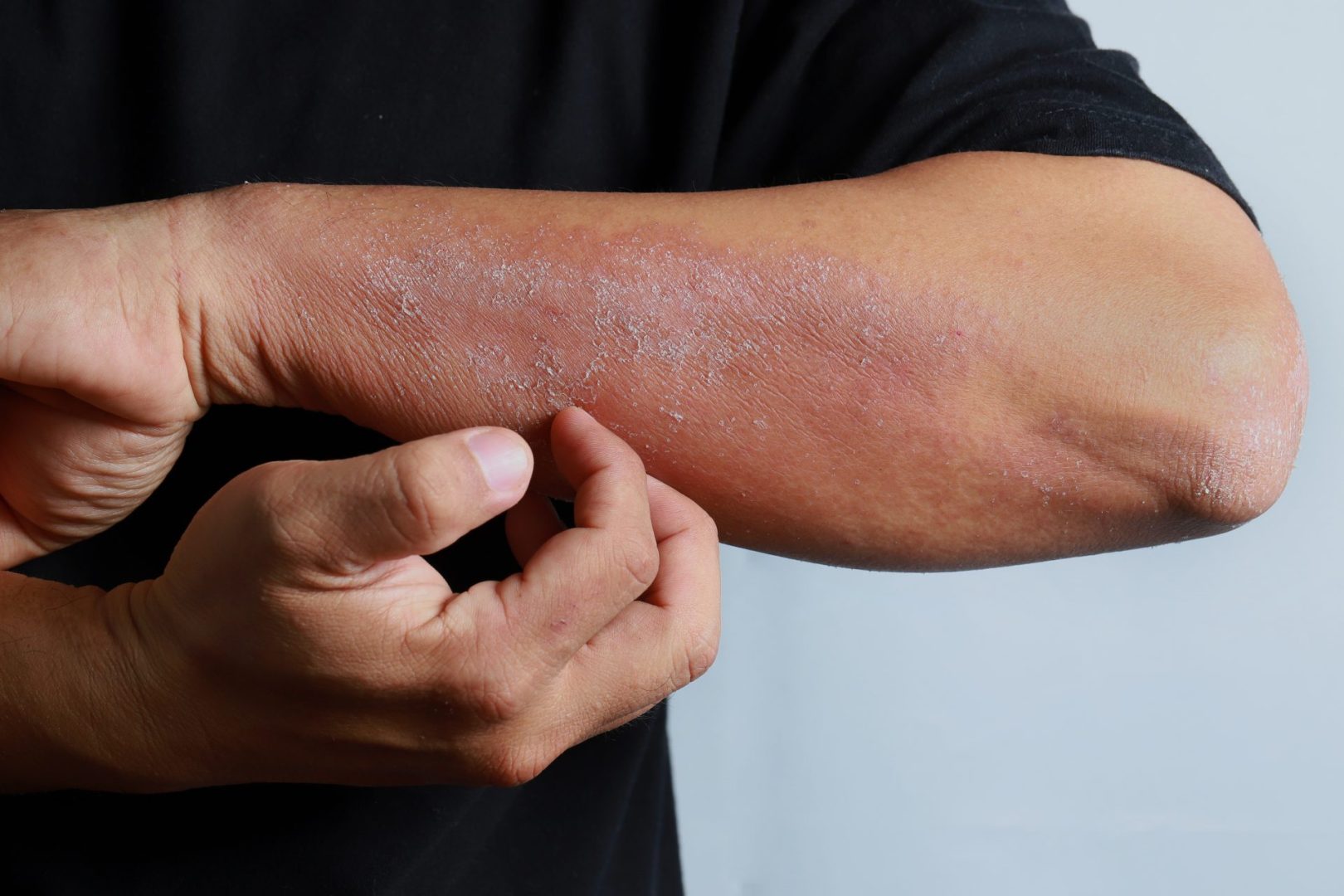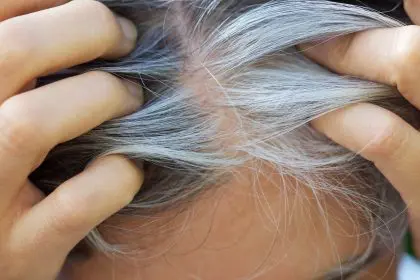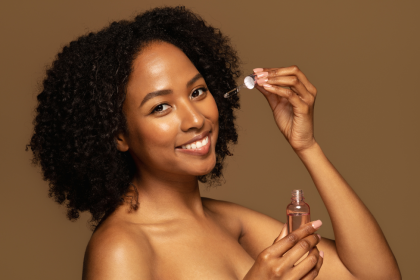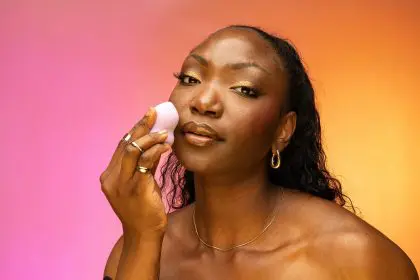That eczema flare-up might be yesterday’s problem, but those dark patches it left behind could be sticking around for the long haul. While you’ve finally stopped the maddening itch of atopic dermatitis, now you’re facing an entirely new frustration—persistent dark spots that refuse to fade. For many people with darker skin tones, these post-inflammatory hyperpigmentation marks can be even more distressing than the eczema itself, creating a constant visible reminder of past flare-ups.
The cruel irony is that the same melanin-rich skin that gives you your beautiful complexion also makes you more vulnerable to these stubborn patches. Your skin’s natural protective response is essentially working overtime, creating a cosmetic aftermath that can last months or even years after the inflammation has calmed. But before you resign yourself to covering up or waiting endlessly for these spots to fade, let’s explore why this happens and what actually works to send these shadow marks packing.
Why your skin tone changes the post-eczema recovery game
When eczema inflames your skin, your body responds by producing extra melanin—the pigment that determines skin color. It’s actually a protective mechanism, but it leaves behind those telltale darker spots long after the redness and itching subside.
This process hits differently depending on your skin tone. If you have more melanin-rich skin to begin with, your skin’s natural response is to produce even more pigment when inflamed. It’s like your skin’s protective system cranks the dial to maximum, resulting in more noticeable dark patches that can take frustratingly long to fade.
While anyone can develop post-inflammatory hyperpigmentation, it’s particularly common and more pronounced in deeper skin tones. The patches can range from light brown to deep purple depending on your natural skin color, and they often appear exactly where your eczema was most severe.
The hidden psychological impact nobody talks about
The lingering dark spots from eczema create a double burden for many people. Long after the physical discomfort of a flare-up subsides, the visible reminders remain, often affecting self-confidence and quality of life in ways that aren’t always acknowledged.
Many people report feeling self-conscious about these marks, especially when they appear on visible areas like the face, neck, or arms. The persistent nature of hyperpigmentation means that even when you’ve successfully managed your eczema, you’re still dealing with its visual aftermath for months or even years.
This extended recovery period can be particularly difficult to navigate in a world obsessed with “perfect” skin. The psychological impact deserves recognition and addressing these marks isn’t merely cosmetic—it’s about reclaiming your skin confidence while your body heals.
1. Retinoids shine as frontline fighters against dark spots
Vitamin A derivatives known as retinoids stand out as some of the most effective treatments for post-eczema dark spots. These powerhouse ingredients work by accelerating your skin’s natural turnover process, essentially helping your skin shed the pigmented cells faster.
Prescription-strength options like tretinoin can produce dramatic improvements, with some studies showing up to 100% clearance of dark spots after consistent use. Over-the-counter adapalene works similarly but with a gentler approach, making it more suitable for sensitive skin still recovering from eczema.
The catch with retinoids is that they require patience and careful use. Results typically take at least three months of consistent application, and they can initially cause irritation or dryness—the last thing your post-eczema skin needs. Starting with lower concentrations and gradually increasing frequency helps minimize these side effects while still getting results.
2. Hydroquinone remains the controversial gold standard
Despite ongoing debates about its safety, hydroquinone remains one of the most potent treatments for stubborn hyperpigmentation. This ingredient works by inhibiting the enzyme responsible for melanin production, effectively putting the brakes on your skin’s pigment-making process.
Available in both prescription and over-the-counter formulations, hydroquinone can significantly lighten dark spots when used correctly. The most dramatic results come from combining it with other treatments like retinoids or chemical peels.
The controversy around hydroquinone centers on potential side effects with prolonged use, including a paradoxical darkening called ochronosis that can occur in darker skin tones. This risk makes it crucial to use hydroquinone under professional guidance and for limited treatment periods, typically no longer than three months before taking a break.
3. Chemical peels remove darkened layers with precision
When topical treatments aren’t making enough progress, chemical peels offer a more aggressive approach by removing the top layers of pigmented skin. Different acids target hyperpigmentation through various mechanisms, making them versatile options for different skin types.
Glycolic acid peels work wonders for many people, with studies showing around 50% improvement in dark spots after several months of treatment. For more sensitive skin, lactic acid provides a gentler alternative while still delivering impressive results. Salicylic acid peels offer the added benefit of controlling oil and preventing future breakouts that could trigger new hyperpigmentation.
The intensity of peels varies dramatically, from mild at-home versions to deep professional treatments. The deeper the peel, the more dramatic the results—but also the greater the risk of irritation or even worsening pigmentation if not done correctly. This makes professional application particularly important for darker skin tones.
4. Laser treatments require extra caution with darker skin
Laser therapy can deliver impressive results for stubborn hyperpigmentation, but it’s a double-edged sword for darker skin tones. The wrong type of laser can actually worsen pigmentation by triggering additional inflammation—exactly what you’re trying to avoid.
The key lies in choosing the right technology. Q-switched Nd:YAG lasers have emerged as one of the safer options for melanin-rich skin, with studies showing significant improvement after about six treatments. These specialized lasers can target excess pigment without damaging the surrounding skin.
Finding a dermatologist with extensive experience treating darker skin tones is absolutely crucial with laser therapy. An expert practitioner will understand how to adjust settings specifically for your skin type and condition, minimizing risks while maximizing results.
5. Newer ingredients offer gentler alternatives
For those wary of traditional treatments or looking for maintenance options, several newer ingredients show promising results with fewer side effects. These gentler alternatives are particularly valuable for skin still recovering from eczema inflammation.
Tranexamic acid has emerged as a game-changer for many, reducing pigmentation by inhibiting the inflammatory processes that trigger melanin production in the first place. Initially used as an oral medication, it’s now available in topical formulations specifically targeting hyperpigmentation.
Vitamin C serums brighten skin and provide antioxidant protection, while niacinamide reduces inflammation and interrupts melanin transfer to the skin surface. Azelaic acid offers the dual benefit of fighting pigmentation while also calming inflammation, making it particularly suitable for skin prone to both eczema and hyperpigmentation.
6. Why prevention trumps treatment every time
Managing your eczema effectively remains the single most important strategy for preventing those stubborn dark spots from forming in the first place. Every flare-up you prevent is one less opportunity for hyperpigmentation to develop.
Following your dermatologist’s treatment plan diligently, maintaining a consistent moisturizing routine, and identifying and avoiding your specific triggers can dramatically reduce the frequency and severity of flares. Fewer flares mean fewer opportunities for pigmentation changes.
When eczema does flare up, resist the urge to scratch, no matter how intense the itching becomes. Physical trauma from scratching significantly increases the risk and severity of post-inflammatory hyperpigmentation. Cool compresses, anti-itch medications, and keeping nails short can help minimize this damage.
7. Sunscreen becomes your non-negotiable ally
If you’re dealing with hyperpigmentation, sunscreen isn’t optional—it’s essential. UV exposure stimulates melanin production and can darken existing spots while also triggering new inflammation that leads to additional pigmentation.
Even brief, incidental sun exposure can set back your progress by weeks or months. Broad-spectrum SPF 30 or higher sunscreen, applied generously and reapplied every two hours when outdoors, creates a crucial shield against this pigment-deepening radiation.
For darker skin tones, finding a sunscreen that doesn’t leave a white cast becomes particularly important for daily compliance. Newer formulations with transparent zinc oxide or chemical filters specifically designed for deeper skin tones can provide protection without the ghostly appearance that has historically made sunscreen use challenging.
Finding the right dermatologist makes all the difference
Perhaps the most important factor in effectively treating post-eczema hyperpigmentation is working with a dermatologist who truly understands skin of color. Not all skin responds the same way to treatments, and approaches that work brilliantly for lighter skin tones can sometimes worsen pigmentation in darker skin.
A knowledgeable dermatologist will create a personalized treatment plan that considers your specific skin type, the severity of your pigmentation, your eczema status, and your treatment goals. They’ll also know when to pivot to different approaches if your skin isn’t responding as expected.
Don’t hesitate to specifically ask potential dermatologists about their experience treating hyperpigmentation in skin tones similar to yours. The right professional partnership can mean the difference between frustrating trial-and-error and steady improvement in your skin’s appearance.
The journey to resolving post-inflammatory hyperpigmentation requires patience and persistence. These marks didn’t appear overnight, and they won’t disappear that quickly either. But with the right treatment approach, consistent sun protection, and effective eczema management, you can gradually fade these shadows from the past and reveal the even-toned skin underneath.
















